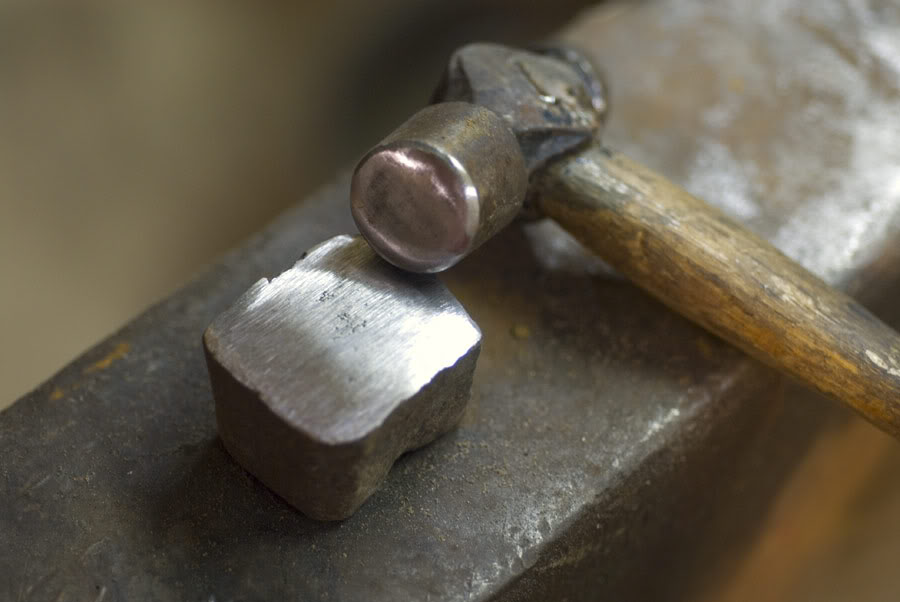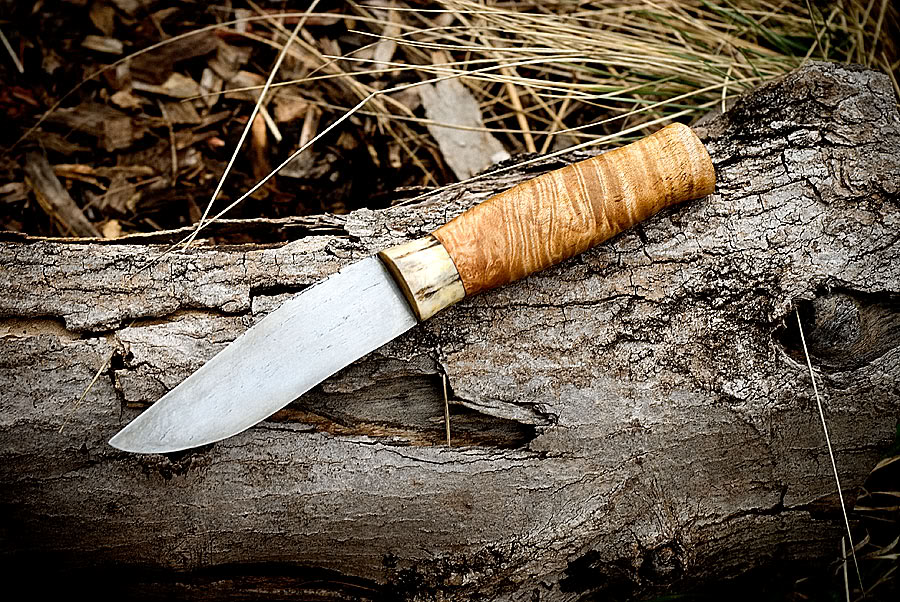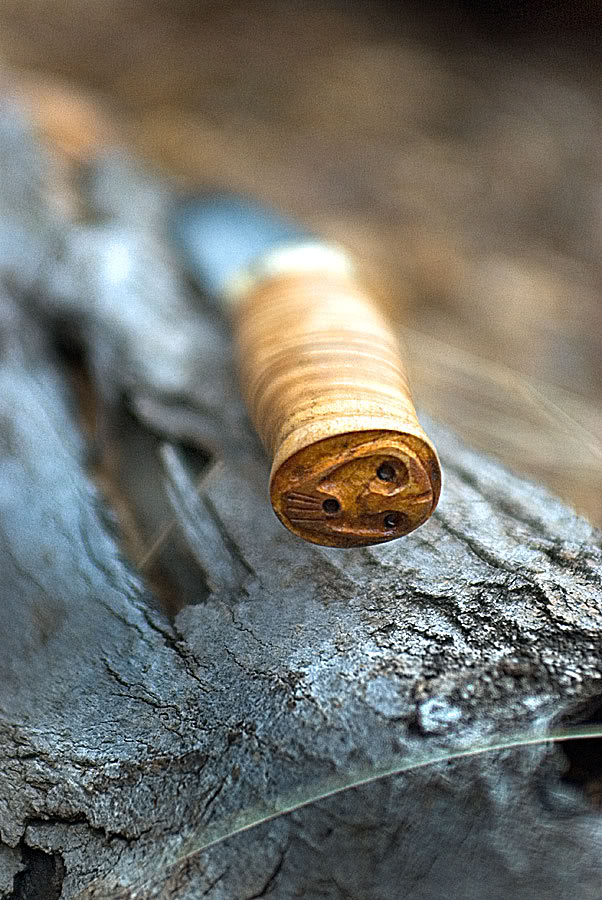I've never work hardened iron, or bronze for that matter, so I'm planning on using this exercise to learn a lot as well as make some very interesting historically-inspired blades.
The blades I forge will range from inspired to near replicas.. depending upon my mood and inspiration. I may do a dagger.. but, for some reason, I have a greater interest in single edged blades. I do have some 1.5" diameter wrought iron bar that is 0.8%P... so, once my press is complete, I plan to forge a sword. In the meantime, I would love for people to share any ideas of blades or any interesting information they might have on work hardened iron.
My longer term goal is to start doing this with bloomery iron and hopefully play around with influencing the P content of my blooms..
Anyway.. I've already started with some 1/4" round bar that is 0.4% P. This is a little on the low side, but I wanted to start with some of my smaller stock to just get a feel for this project. Lately I've been seeing some of these Celtic curved fighting knives that have such beautiful lines, so I decided to do a smaller blade inspired by one of those. If anybody has any information of what the handles/hilts were like for these, please share! Very hard to find info.
The plan is forge as close to shape as possible, including the bevels, do some clean up draw-filing and then hammer to as thin of an edge as possible. I'm curious as to how deeply penetrating the work hardened effect is, so on the first attempt I forged to about 3 mm thick, hammered to 1 mm, filed away hammer marks and then sharpened.

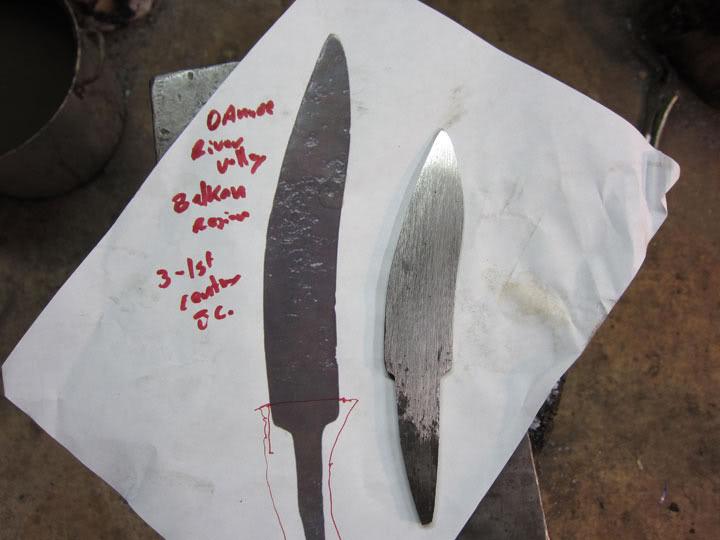
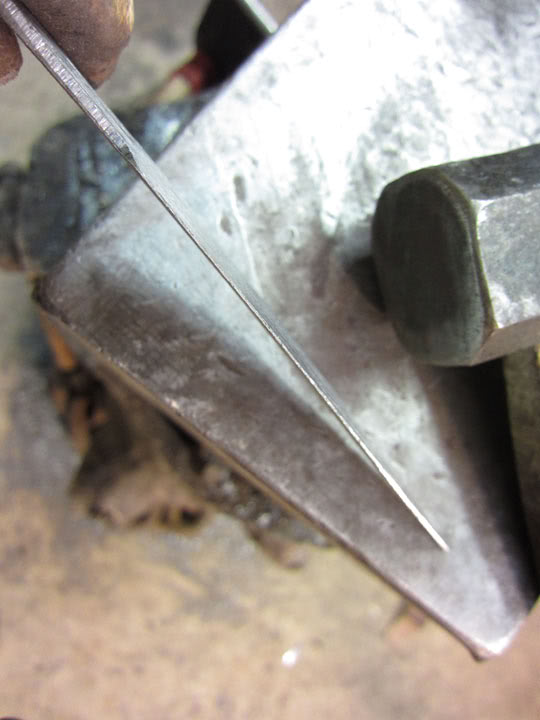
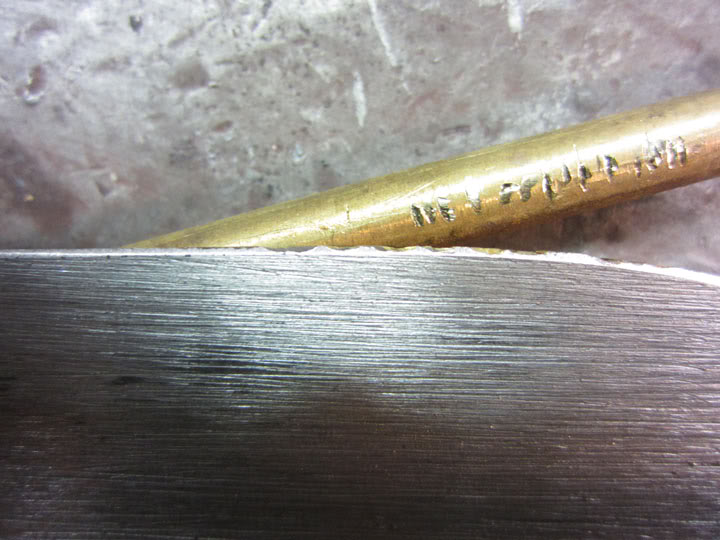
The last picture shows a test I normally do with my steel blades after the quench... the brass rod test. To test my heat treat, I will take a brass rod and hack on it and run the edge along it with pressure and then look for chipping and deformation. I understand that this may be too harsh of a test for any work hardened knife, but I thought it would be a good place to start. Obviously it failed. Since I have no actual experience with work hardened iron blades, I really don't know what to expect. After that, I ground the edge back and then hammered it down even thinner and then went to carving on oak. It held up to that pretty well after about 5 minutes or so and cut very well. So... I will go ahead and put a handle on it and just use it for a while and see how it does. Again.. I would love folk's input on handle designs....
If I start seeing an interesting pattern in terms of usage testing as I work with blades of higher P content, I will send some out for hardness testing. I suppose I should also make a blade and NOT work harden it and see how well that holds up.
I should also add that I'm still playing around with hammer hardening methods. At this point, I really can't do it without leaving small hammer marks. Since you did not see these in actual blades.. either they were able to grind them out due to deep work hardening effects.. or they were just a heck of lot better than be at hammer control. Probably the latter.
Hope this is of interest! I think it will be fun to offer these for sale for people that would like to have very period correct blades in their kits or collections.
